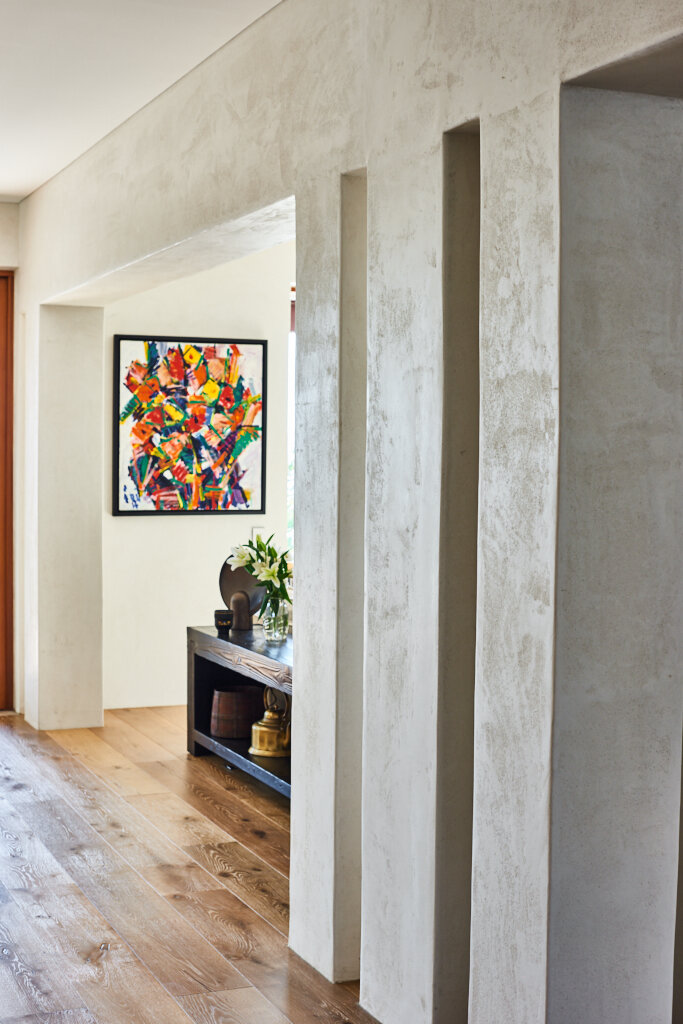The ultimate guide to modern plaster walls
The Angie Pai Room at No.92 GPR is finished in an earthy clay render
Plaster can make an interior pop. But do you know your Venetian from your tadelakt? Get the lowdown on trending wall finishes.
Style is an extension of who we are. But in the same way that fashion can be used to aesthetically communicate our vibe, walls can be dressed up or down with plaster to inject a space with personality, elegance and light.
A subtle yet precise art, wall plastering is one of the hardest working components of interior design. But the most memorable modern interiors don't just look pretty, they convey feeling. Walls are the canvas, but plaster tells a story. And your job is to work out the best way to visually express it.
There are plenty of technical terms and trade jargon in the world of luxury wall coatings, but we're here to help you cut through the clutter. Here's our quick guide to the types of luxury wall finishings topping interior design trends for 2021, so you can brush up on your knowledge and confidently nail that brief.
Clay render
If you want to go 'green', then clay plaster is your first step to an award-winning eco-friendly interior. Not only do walls rendered with clay appear earthy, sensuous, rustic and more congruent with nature, they're also non-toxic and the pigments are all-natural, which makes them a popular choice for earth-loving, chemical-free households and interiors. Clay is also porous and so it allows a structure to breathe and regulates humidity. In fact, natural clay wall plasters can even improve our mood because they release negative ions, which along with repelling dirt and grim, can help humans absorb more oxygen, increase serotonin and even offset the electric charge from modern tech.
Venetian plaster
A relatively low maintenance surface that was prevalent in ancient Rome, Greece and Egypt, Venetian plaster has a soft, iridescent aesthetic and is currently experiencing a renaissance in interiors.
Historians believe it may even date back as far as 9,000BC when some of the earliest forms of plaster were discovered in the Middle East, then Mesopotamia. Also known as polished plaster, this decorative wall plaster is applied with a trowel in multiple layers and then polished to a lustrous sheen that creates depth, warmth and texture.
There are various techniques within the Venetian umbrella, such as Marmorino, which has a marbled effect, and scagliola, which imitates decorative stone. But the results are quite varied and can be smooth or textured, muted or glossy, bold in colour, near-metallic or natural and raw.
Venetian plaster at No. 92 GPR
Tadelakt
This textural and dimensional wall plastering technique has a finish that resembles natural stone and so it can turn a flat wall into a hand-carved work of art. Originating in Morocco around 2000 years ago, tadelakt (which means 'to knead' in Arabic) is a labour intensive waterproof luxury wall surface that's iconic of the architecture found in the souks and riads of Marrakech. It was first used in Roman aqueducts and Turkish hammams, so it's ideal for plastering bathrooms and kitchens.
Durable and breathable, tadelakt is completely seamless, so it's a no-brainer if the thought of scrubbing grout makes you want to run for the nearest hotel. Unlike Venetian, tadelakt has a natural earth pigment and is often mixed with aggregrates, such as marble and granite.
Tadelakt in an award-winning home in Dover Heights
Get in touch with Creative Wall Solutions and learn more about which plaster is best suited to your space.



